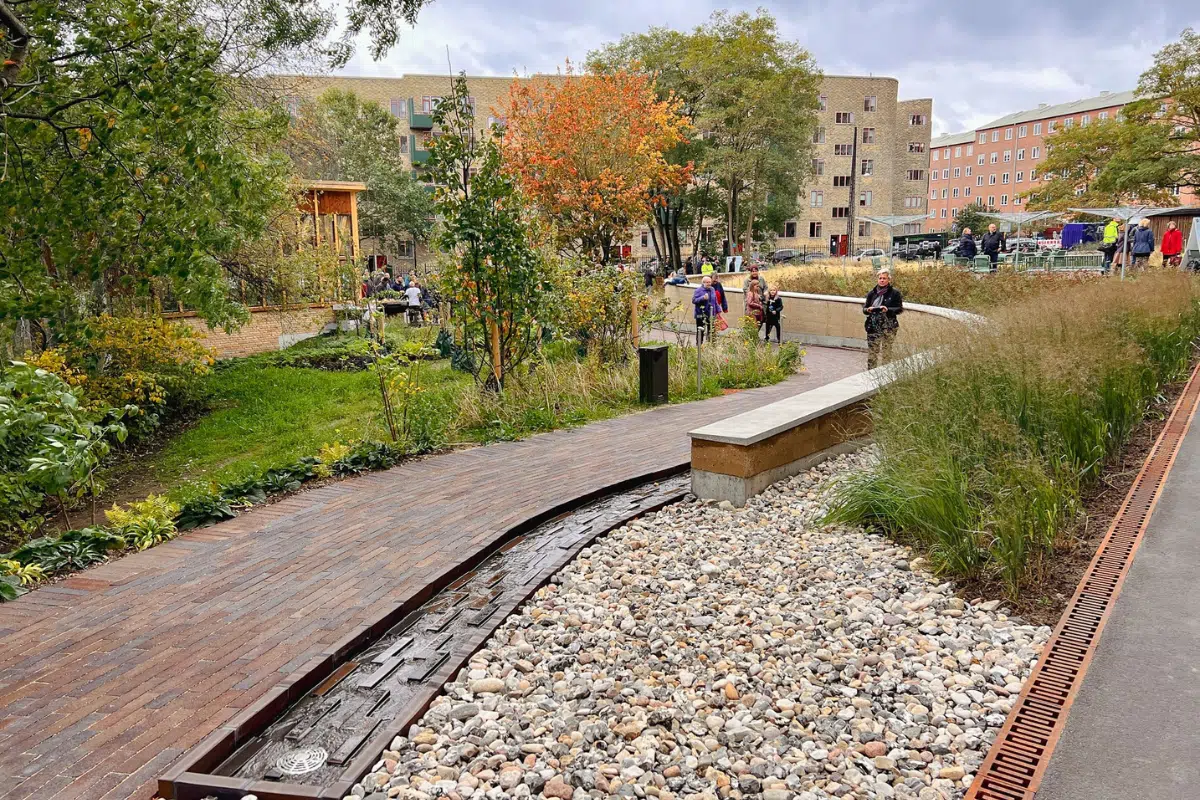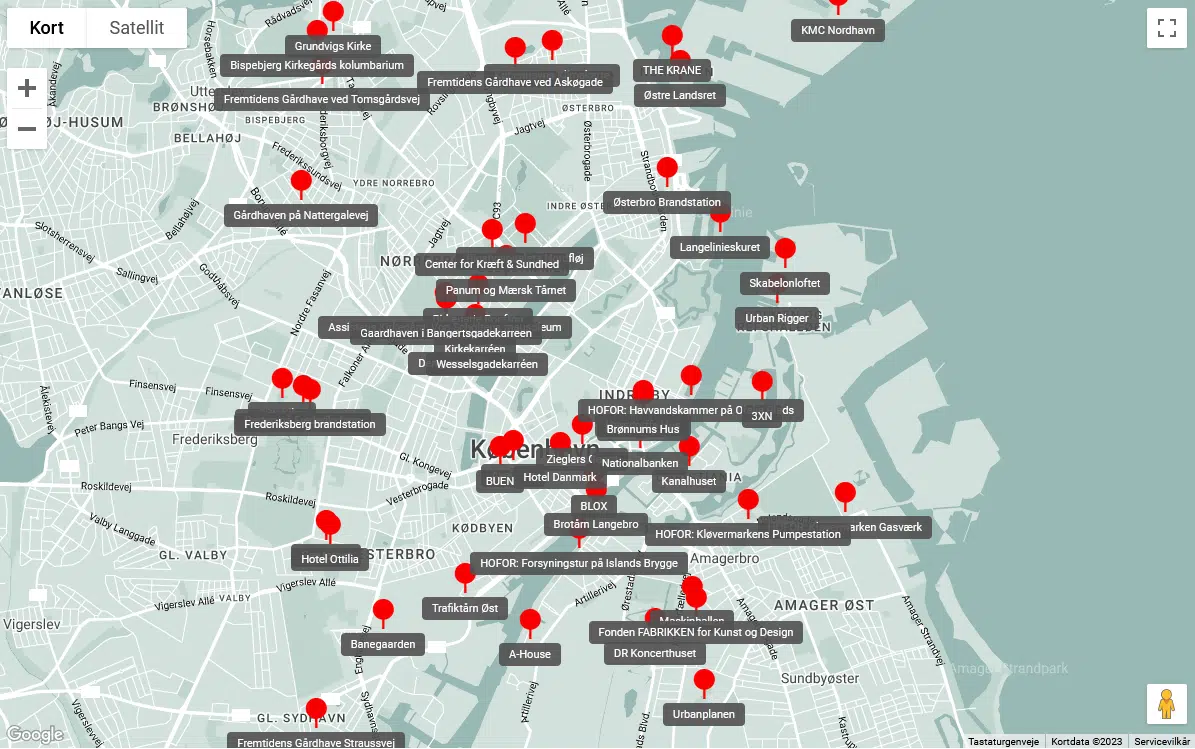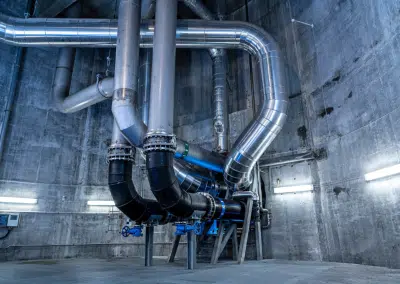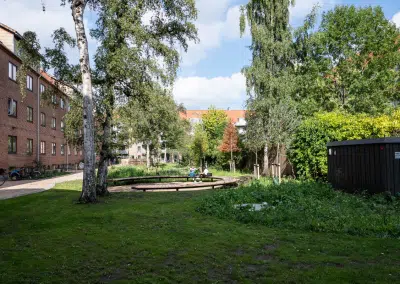The Courtyard of the Future on Tomsgårdsvej

Site
Hovmestervej across the street from number 39, 2200 København NV
Open
Saturday and Sunday 10-17
Accessibility
- Hoist / ramp / level access to the front door
- Level access in the building / site (no stairs)
- Level access to outdoor areas
- Lift
- Accessible restroom
- Locked doors can be opened from the outside in case of emergency
- Chairs or benches to rest on
- Possible to eat / drink
- Disabled parking
- Teleloop
- Member of Solsikkesnoren
- Member of God adgang
How should tomorrow’s courtyards look? Come and experience the vision of one of Denmark’s most renowned landscape architects. Landscaping studio SLA has created a private courtyard in Copenhagen’s Northwest district to manage the vast amounts of rain from the cloudbursts we will experience more and more often in the future.
Between Tomsgårdsvej, Straussvej and Askøgade in Copenhagen’s Northwest district lies a little piece of the future. One thing none of us can avoid is climate change, which is why the City of Copenhagen has launched the demonstration project, “Courtyards of the Future”, to try to figure out how courtyards can be used to mitigate the effects of cloudbursts and climate change.
Bricks from Rigshospitalet Become an Orangery
In the Courtyard of the Future in Nordvest, renowned architectural studio SLA has created a wild, green oasis promoting biodiversity with a wide range of grasses, plants and trees. SLA is also behind the City Dune outside the SEB bank headquarters and the landscaping on Sønder Boulevard. In this Courtyard of the Future, the focus is on minimizing carbon emissions. For instance, the Orangery was built using upcycled windows and bricks from Copenhagen University Hospital – Rigshospitalet. And the courtyard’s two levels are separated by a rammed-earth wall, minimizing the use of concrete. The winding earthen wall also creates little niches for hanging out, small gardens and rainwater management.
Avoiding Flooded Basements
The rainwater from the surrounding building’ roofs is collected in pipes under the sidewalk and led through the building and out into the courtyard. There it is used to wash bikes and water gardens, as well as becoming part of the courtyard’s rustic stepped waterfall, hidden among the vegetation and comprising deep hollows and large changes in terrain level. The trickling and burbling water creates a new natural soundscape in an area otherwise plagued by traffic noise.
During Open House, you can experience this private courtyard and find inspiration for your own landscaping. Make sure to visit the Klimakarréen and Nattergalevej climate-resilient courtyards as well.




